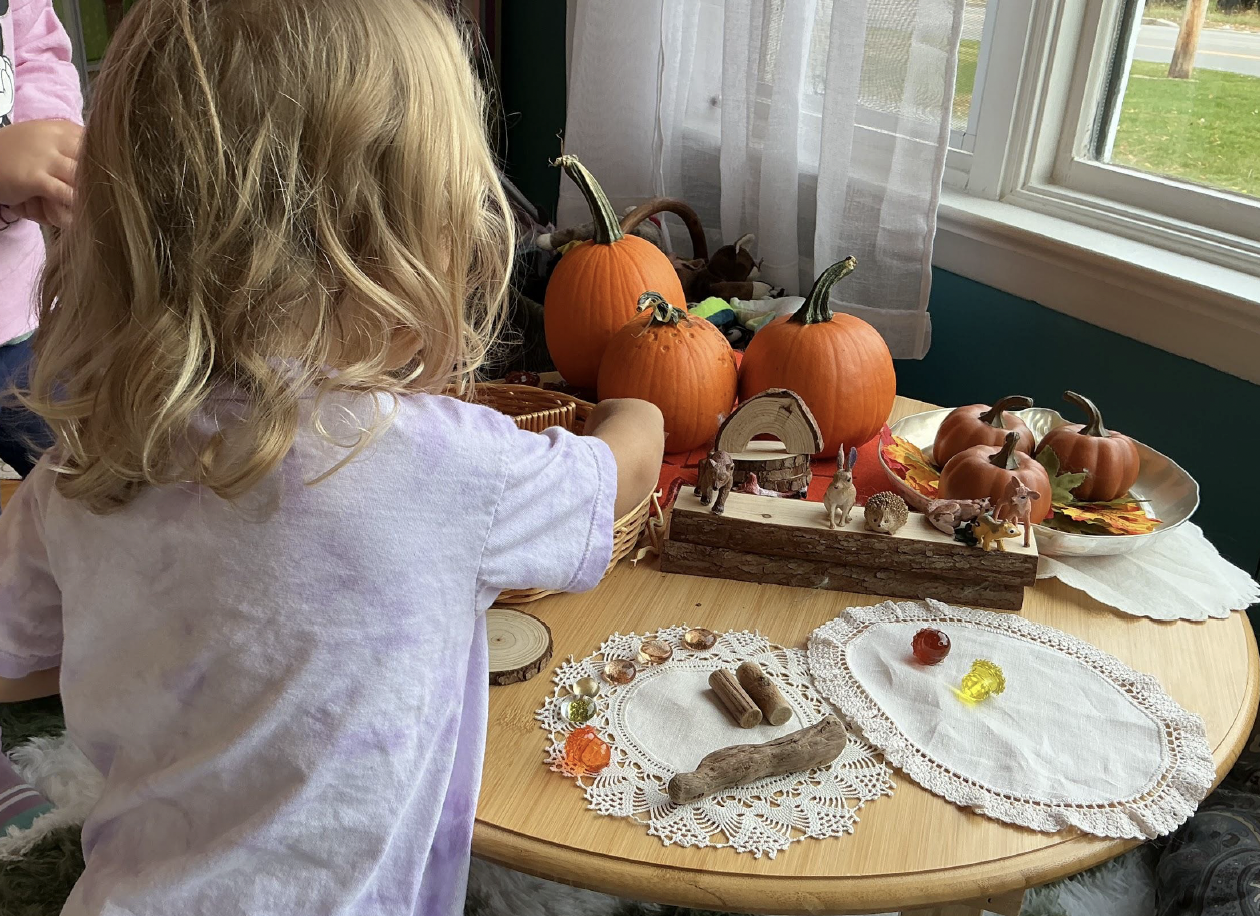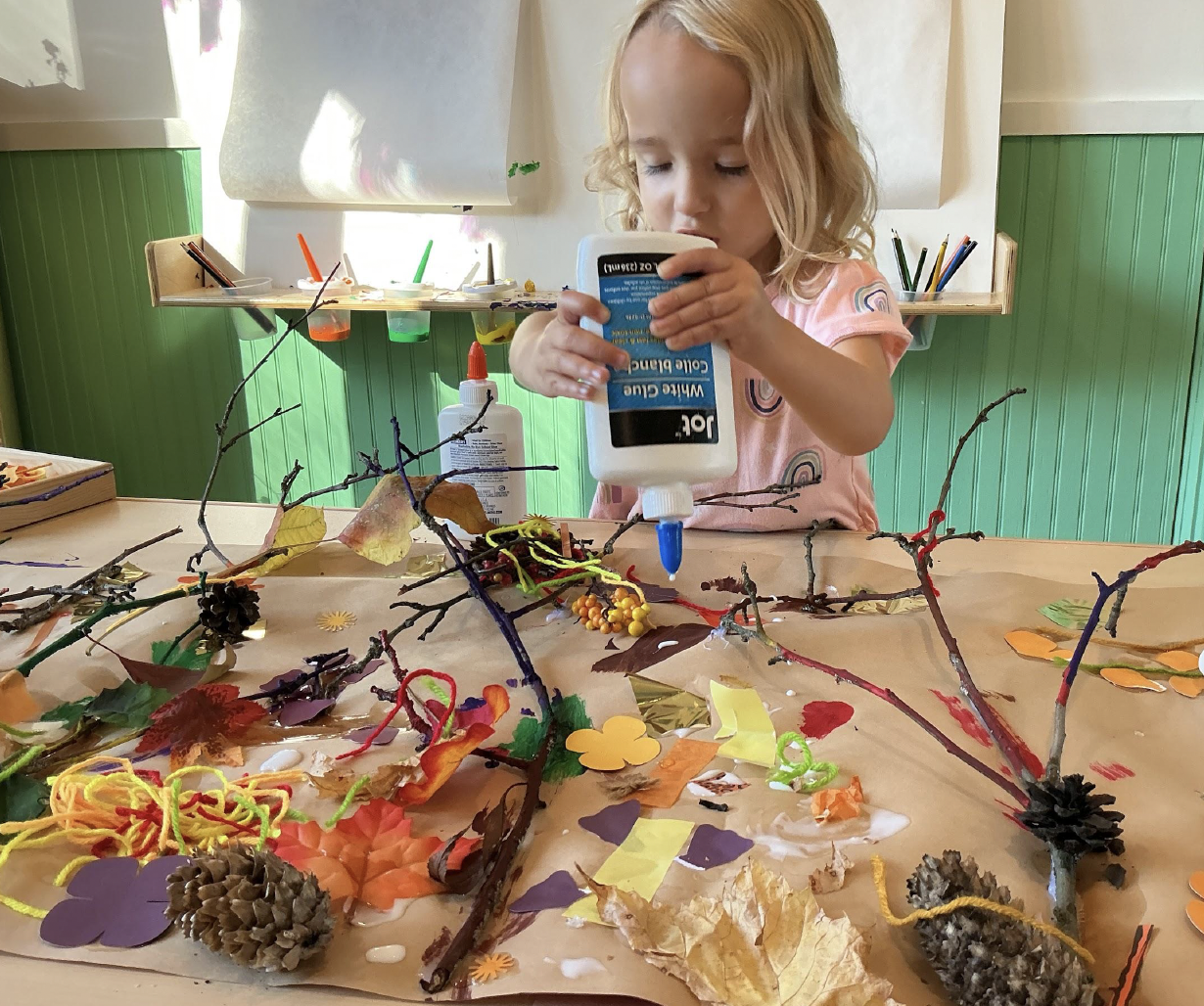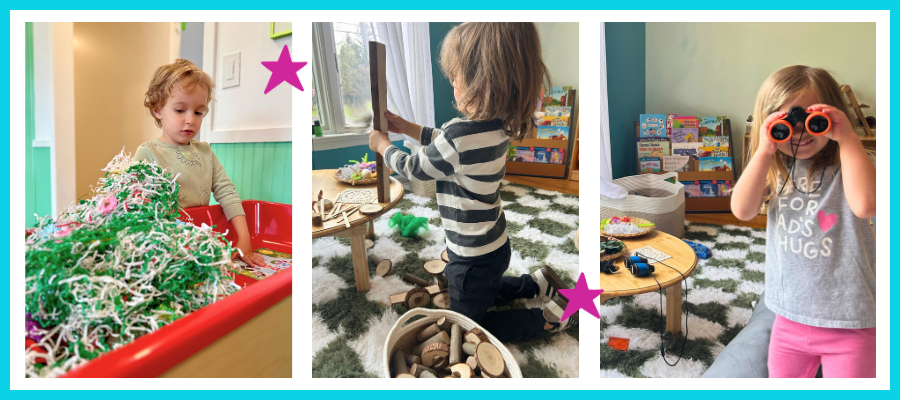Director’s Corner
We know that starting preschool is a big step for children and families, and sometimes it’s a difficult one. There can be tears, nervousness, and other big feelings that children haven’t felt before; even some new feelings for families because they’ve never brought their child to preschool before. We want to support families and children as best we can; we want you all to fall in love with your first preschool experience.
● We encourage families to follow a consistent, brief goodbye ritual. It’s best to try not to drag out the goodbye, as that can make the transition more difficult. I read a good analogy somewhere along the years: imagine going to the doctor for your flu shot and the doctor kept telling you they were going to give you the shot, but kept stalling, your nerves and anticipation would just keep building versus the doctor counting to three and giving you the shot. We understand it’s not that simple to leave your child for the first time, but we hope that you will trust us to take the best care of your child. It is also very important not to sneak out on your child.
● We acknowledge your child’s feelings; it’s okay to feel sad or nervous at first. It is important for all of us to stay calm, a calm demeanor can help children feel more secure.
● Sometimes your child might want to bring a comfort item from home, such as a favorite stuffed animal, a special blanket, or a family photo.
● We know how important it is to partner with families, parents know their children best! Let's create a plan together to support the separation going as smoothly as possible. Once you leave, allow us to help your child transition into the school day, and trust that we will contact you if we aren’t able to comfort them.
Separation can be a developmental challenge, it can last for weeks or may appear later than expected. It's important that we take the children’s feelings seriously, talk to them honestly, and give them lots of support. We love to praise their efforts, celebrate their successes and acknowledge their bravery in a positive way.
At Wunderville, we want to be the teachers that when the children and families look back on their time at preschool, they feel love in their hearts, have a smile on their face, and can truly say they knew that we cared.
Written by Sarah Tubbs
November 25, 2025
Written by Sarah Tubbs
October 30, 2025
Fall is a time for discovery, collaboration, and the beauty of the natural world.
We are off to a busy start at Wunderville!
We used fall-themed loose part* pieces, as a provocation which led to counting, story telling, size comparisons, sorting, and even pretend play. Loose part play offers children an open-ended play experience that stimulates their imagination and creativity. Children can develop their own ideas, and through self-expression, gain confidence and enjoy the learning process.
* In the Reggio Emilia approach, loose parts play is the use of open-ended, natural, or recycled materials that do not have a predetermined purpose, allowing children to construct their own meaning through exploration and creation.
Apple picking was a topic of conversation during Meeting time, which led us to talking about apple sauce, so we decided to make apple sauce together! We counted the apples, compared the different types of apples, cut them, cooked them, and then enjoyed our hard work! We feel children’s interests and ideas should guide their learning through projects and explorations.
Inspired by the leaves changing colors and falling in our backyard, we created our own fall forest. Collaboration and working together is a core principle of our Reggio Emilia approach.
Our curriculum is not pre-planned, it emerges based on the children’s curiosity and interests. We are partners in their learning, helping to guide exploration, ask questions and document their learning process. At Wunderville, learning is a social experience, with strong connections built between teachers, children, and families.
Written by Sarah Tubbs
August 15, 2025
The Magic of Open-Ended Art
Recently, Wunderville held a booth at the Penfield Family Festival, and we had the opportunity to create a community art piece. We loved watching the magic unfold in front of us throughout the day. The concept of the project was a loose-parts sculpture; add anything you’d like to the art piece, just do not remove anything that has already been glued on. The possibilities were endless! The learning opportunities were endless!
The most common question we received when they approached the table was, “So, what do we do?” Our response, “Anything you want”, their eyes lit up! This open-ended project allowed everyone to focus on exploration and imagination through the various materials rather than a specific outcome.
We had the joy of observing problem-solving skills across all ages. “How can I get this to stand up?” “How can I connect these?” We saw the determination in their eyes as they worked and tried different strategies. Some children said that they felt like an inventor AND an artist!
Wow, the self-expression that was happening as they worked! One child described the area that she was working on as a “birthday party”, and she was sure to pick out bright colors to add to her “party”. Someone else described their work as a “battle” and told me all the elaborate details of his “battle”. They were telling stories as they were working on an art piece, AMAZING! (If we were back at Wunderville, Johanna and I would’ve been sure to write down their stories to share with their families.)
We had so much fun and everyone who joined us for some art enjoyed themselves, all ages! A kindergarten teacher stopped by the table and stated that she wished she could do this stuff in kindergarten, and we said we wished that all grade levels made time for open-ended art! This style of art focuses on their creative process rather than a specific outcome, encouraging exploration and imagination through various materials. It fosters cognitive and emotional development, problem-solving, and self-expression. It’s the only way we do art at Wunderville!
Written by Sarah Tubbs
July 28, 2025
How does the Reggio Emilia approach support school readiness?
The Reggio Emilia approach emphasizes hands-on, exploratory learning, making learning enjoyable and engaging for children. This encourages a lifelong love of learning! Let’s take a look at traditional school readiness skills and how a Reggio Emilia approach supports and fosters those skills.
Language and Communication:
This approach supports language development by fostering a rich, multi-sensory environment that encourages children to express themselves through various mediums. It emphasizes collaboration, encourages open-ended investigations, and provides opportunities for dialogue and interaction, all of which contribute to language and communication skills.
Reading and Writing:
Reggio-inspired classrooms are language-rich, with materials like books, posters, and labels, encouraging children to explore and interact. Children are encouraged to explore literacy through their own interests and questions. Literacy is integrated into all activities and projects.
The environment is designed to be stimulating and rich with materials that encourage exploration and experimentation, including writing materials like paper, pens, and markers. Through project-based learning, children are often encouraged to write to record their ideas, observations, and findings.
The Reggio Emilia approach emphasizes providing opportunities for children to engage in meaningful reading and writing experiences, such as creating a story or documenting a project.
Math:
This approach emphasizes real-world applications of math, allowing children to discover and construct their own understanding of numbers, shapes, and patterns.
Teachers create provocations (open-ended learning experiences) that encourage children to investigate mathematical ideas and express their understanding in multiple ways.
Social and Emotional Skills:
Reggio Emilia inspired classrooms prioritize group work, where children collaborate to solve problems and achieve goals. This fosters communication, negotiation, and empathy, as children learn to work together and understand each other’s perspectives.
The Reggio Emilia approach also encourages children to express their thoughts and feelings through various forms of expression, such as art, dramatic play, and movement. This allows children to process their emotions and build emotional intelligence.
Fine and Gross Motor Skills:
Children naturally practice hand-eye coordination, finger dexterity, and wrist strength by engaging in activities like crafting, sensory play, manipulative toys and games, and art experiences.
The Reggio-Emilia approach recognizes that physical movement is essential for a child’s overall development and supports their ability to explore and learn through their bodies.
Independence:
The Reggio Emilia approach strongly supports independence by emphasizing child-centered learning, allowing children to make choices, explore their interests, and take ownership of their learning. The approach encourages children to ask questions, explore their surroundings, and be problem solvers, which builds critical thinking skills and supports them to become independent learners.












